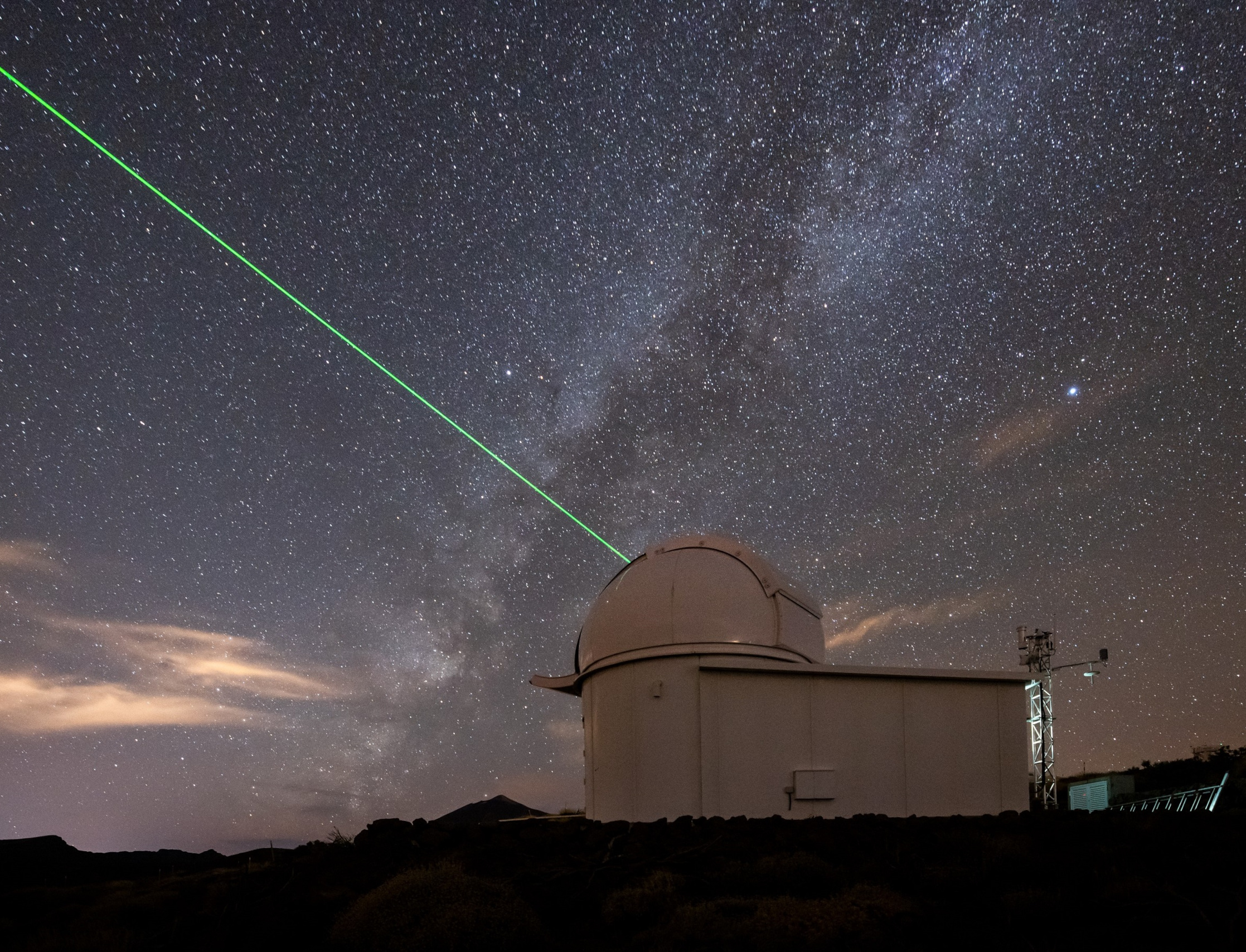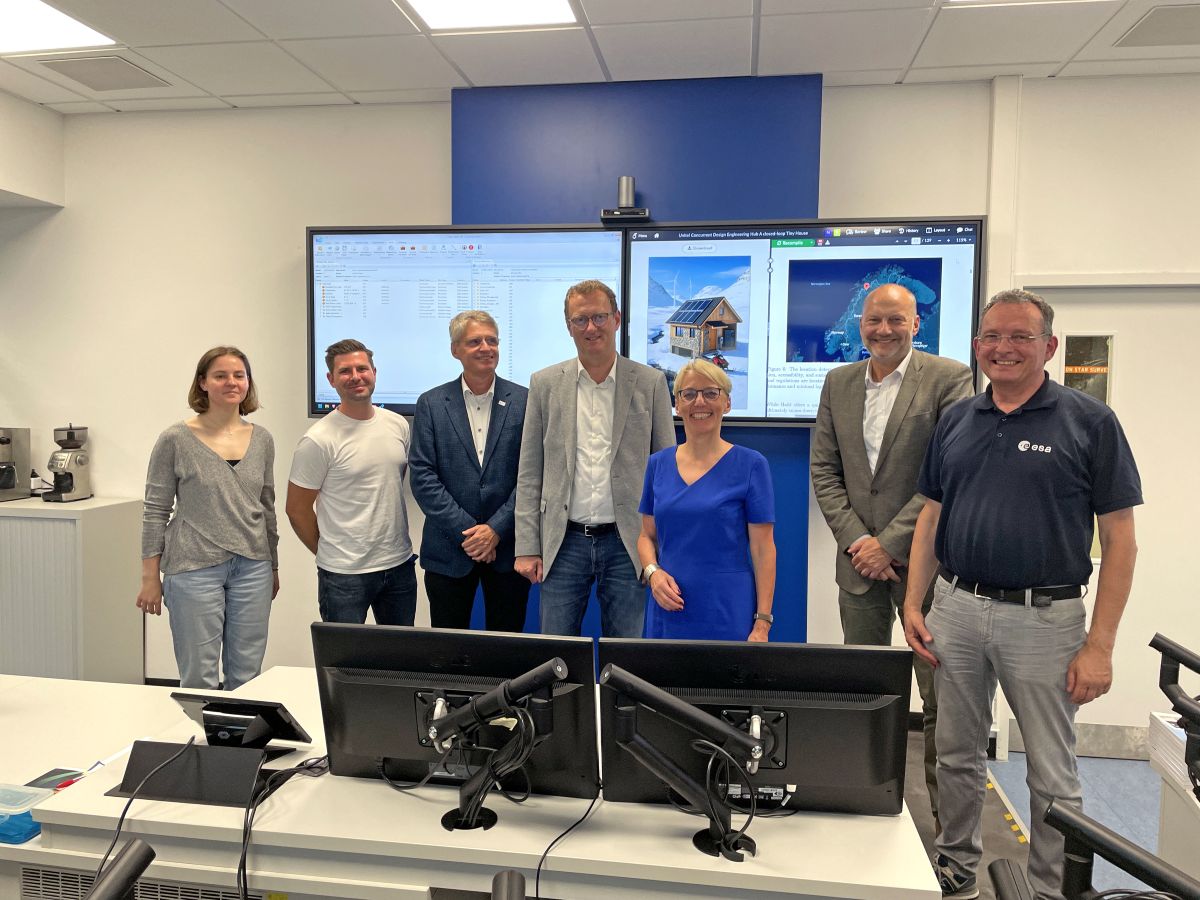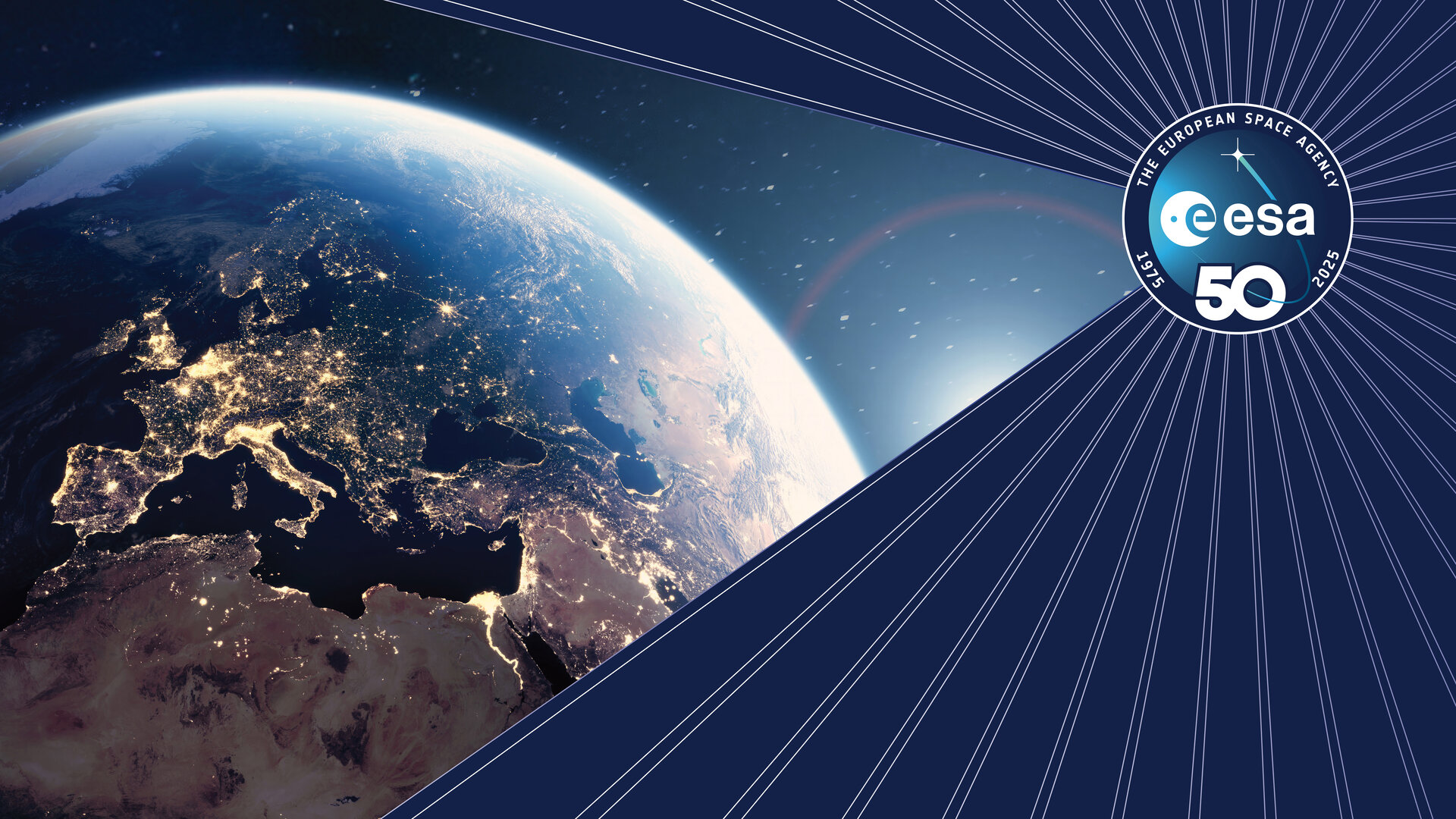German laser ranging company receives ESA innovation award
German company DiGOS GmbH was selected by ESA Commercialisation for its innovation programme 21 Rising Stars.
Space traffic coordination, space debris tracking, optical communications… Optical technologies have the potential to revolutionise the way we operate, monitor, protect and communicate with satellites.
Since its first contract with ESA in 2018, the German company DiGOS GmbH has been fully aware of this and has successfully positioned itself as a recognised player in the field of optical ground station for geodesy and laser telemetry of satellites and space debris.
This autumn, the company's outstanding achievements were celebrated when it received the 21 Rising Stars prize, awarded by the European Space Agency to European companies that driving innovation and growth in the space sector.
This recognition comes as part of ESA's newly established Competitiveness Element under the Space Safety Programme. This initiative aims at positioning European companies as technology leaders, equipping the to tackle emerging challenges in Space Safety.
Izana-1, ESA’s testing ground for optical technologies
This success story begins in the Canary Islands, on the island of Tenerife, where the Izaña-1 laser ranging station (IZN-1) is located. In operation since 2022, it has been the testbed for ESA's optical technologies, such as laser ranging which uses short laser pulses to determine the orbit of space objects - from satellites to space debris.
“Due to an ever more congested space environment collision warning messages for satellites are issued at increasing frequency. Current radar solutions can monitor the position of a large number of satellites, and also track in case of risky situation, but determining the collision risk benefits substantially from increased accuracy of such data,” explains Tim Flohrer, Head of ESA’s Space Debris Office.
“To make a decision whether to manoeuvre satellites to reduce the collision risk, satellite laser ranging can be used to improve the knowledge on the satellite positions and velocity.”
Izaña-1 has also sparked innovation in the field of optical communications, a technology that would allow increased bandwidth over radio at low equipment mass, power consumption and interference.
From one contract to many, from a start-up to an SME
Behind the design, construction and operation of the Izaña-1 station is DiGOS GmbH. Founded in 2014, the Potsdam-based company, which specialises in building optical technologies for geodetic and geophysical systems, saw the ESA contract as an opportunity to build its first optical ground station for geodesy and laser telemetry of satellites and space debris.
As part of its contract with ESA for the Space Safety programme, DiGOS has developed industrialised, turnkey ground stations that enable ESA, JAXA and other partners to reduce the risks associated with operating their satellites. This collaboration highlights ESA's role in fostering the commercialisation of space technologies, enabling companies like DIGOS to transform cutting-edge innovation into scalable, market-ready solutions.
“ESA contracts have enabled us to expand our horizons. Currently, DiGOS builds and operates over 6 stations around the world: 2 in Japan, 4 in the EU. More recently, in 2021, we led the construction of a dedicated GNSS satellite laser ranging system operated as part of the Galileo programme which will set new standards in performance, reliability and automation,” says André Kloth, General Manager of DiGOS.
“DiGOS developed and deployed an industrial product in a short time, from start-up to multiple industrial sales. It has established itself as a reliable supplier of optical ground stations for satellite and space debris laser ranging and has also extended its activities into the field of optical communications,” summarises Tim Flohrer.
“The transition from a two-person start-up to a medium-sized company with a solid commercial balance deserves DiGOS to be awarded as part of ESA's Rising Stars programme.”



